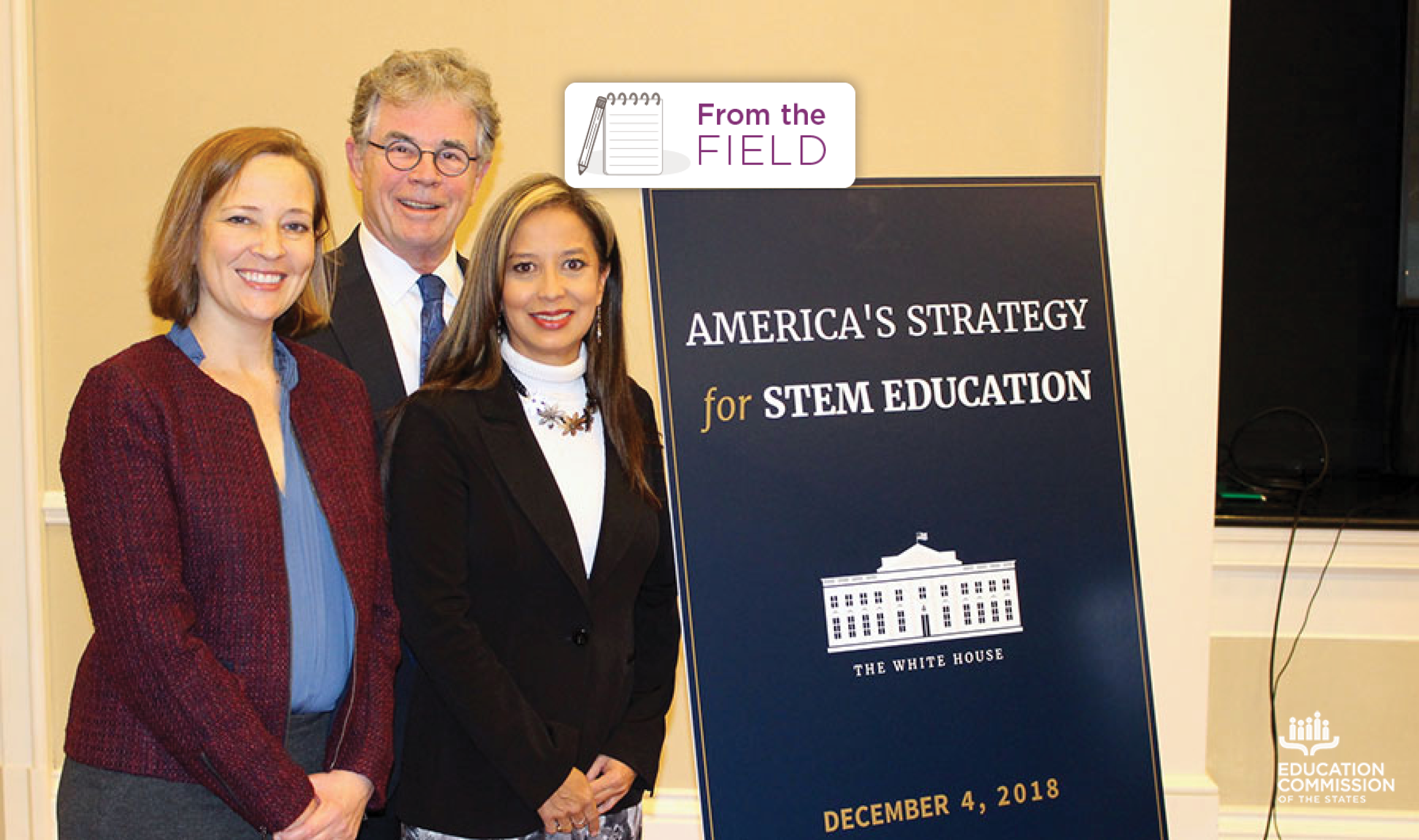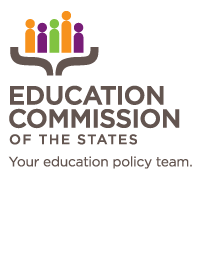Although most students and schools experienced widespread disruptions in 2020, education stakeholders have commented on an unexpected silver lining for STEM education. Specifically, education leaders have noted that the challenges the pandemic placed on America’s education systems have sparked insights and innovations that will elevate STEM education in 2021 and beyond.
For one, the impacts of the pandemic highlighted existing inequities in America’s education systems, perhaps especially so in STEM. One participant in Education Commission of the States’ 2020 Early STEM Policy Academy observed that COVID-19 highlighted the inadequacies of our nation’s education systems, and how long these inequities have been allowed to persist. This participant expressed hope that efforts to address interrupted instruction might spur an end to P-3 instructional practices known to be less effective (for example, the “drill and kill” approach to early reading and math instruction).
As state and local leaders search for strategies to counter interrupted instruction, they can consider replacing less-impactful approaches with developmentally appropriate practices, such as early STEM experiences, that promote play-based, inquiry-based approaches.
Another insight that has come to the fore is that STEM — including early STEM — is uniquely positioned to help address interrupted instruction. During the same 2020 policy academy, state teams commented on the need to accelerate learning and reengage students when states and districts return to in-person instruction. Participants agreed that hands-on, interactive, inquiry-based early STEM experiences, shown to motivate diverse learners, would be best suited to accelerate learning gains and get students excited about learning again.
The impacts of the pandemic also exposed opportunities to rethink teacher training and professional learning in ways that will enhance equitable access to high-quality early STEM instruction. Many recent articles have reported on the large numbers of classroom teachers leaving education in response to the stress of remote instruction, among other challenges. The Early STEM Policy Academy participants observed that the need to prepare new educators in the wake of pandemic-driven teacher attrition presents an opportunity for states to commit to rethinking teacher preparation programs, including the integration of more STEM content and pedagogy in P-3 educator pre-service offerings.
Meanwhile, COVID-19 mandates forced teacher professional development providers to hone their remote training skills, including for state programs focused on supporting teachers’ STEM professional learning. Individuals leading early STEM training efforts in states such as Arkansas — detailed in ECS’ recently-released Teacher Training for Quality P-3 STEM Education Policy Brief — noted that once COVID-19 restrictions lift, their programs will apply those newly polished remote training strategies to be more strategic in the deployment of limited resources.
For example, rather than a trainer spending half a day traveling to another part of the state to deliver an hour of training, program leadership will consider whether remote training might be just as effective. This could support an exponential increase in the number of professional development sessions a trainer can deliver statewide over an academic year.
Individuals interviewed for the early STEM teacher training Policy Brief also suggested that the forced transition to remote learning has led to improvements in the types of early STEM educator supports delivered. For example, while the Ohio STEM Learning Network’s Innovative Leader Institute looks forward to returning to an in-person professional development approach, OSLN is weighing the benefits of increased virtual coaching and check-in sessions with participants as compared to its pre-pandemic model.
Last but certainly not least, STEM gives educators hope. Becky Ashe, director of professional learning and innovation for the Tennessee STEM Innovation Network, observed that their organization conducted 17 professional learning series trainings during the 2019-20 school year, however delivery increased to 15 Professional Learning Series trainings in fall 2020 alone. While the convenience of virtual delivery may have contributed to the uptick in requests for trainings last fall, Becky added that principals are asking TSIN to work with their school “because it’s problem-solving and offering hope. [Principals] see [STEM integration] as a hopeful activity.”
State leaders may want to consider how early STEM integration can support post-pandemic teacher and principal preparation, professional learning and curriculum redesign to mitigate the inequities of past structures and support all P-3 learners’ engagement, achievement and future success.








